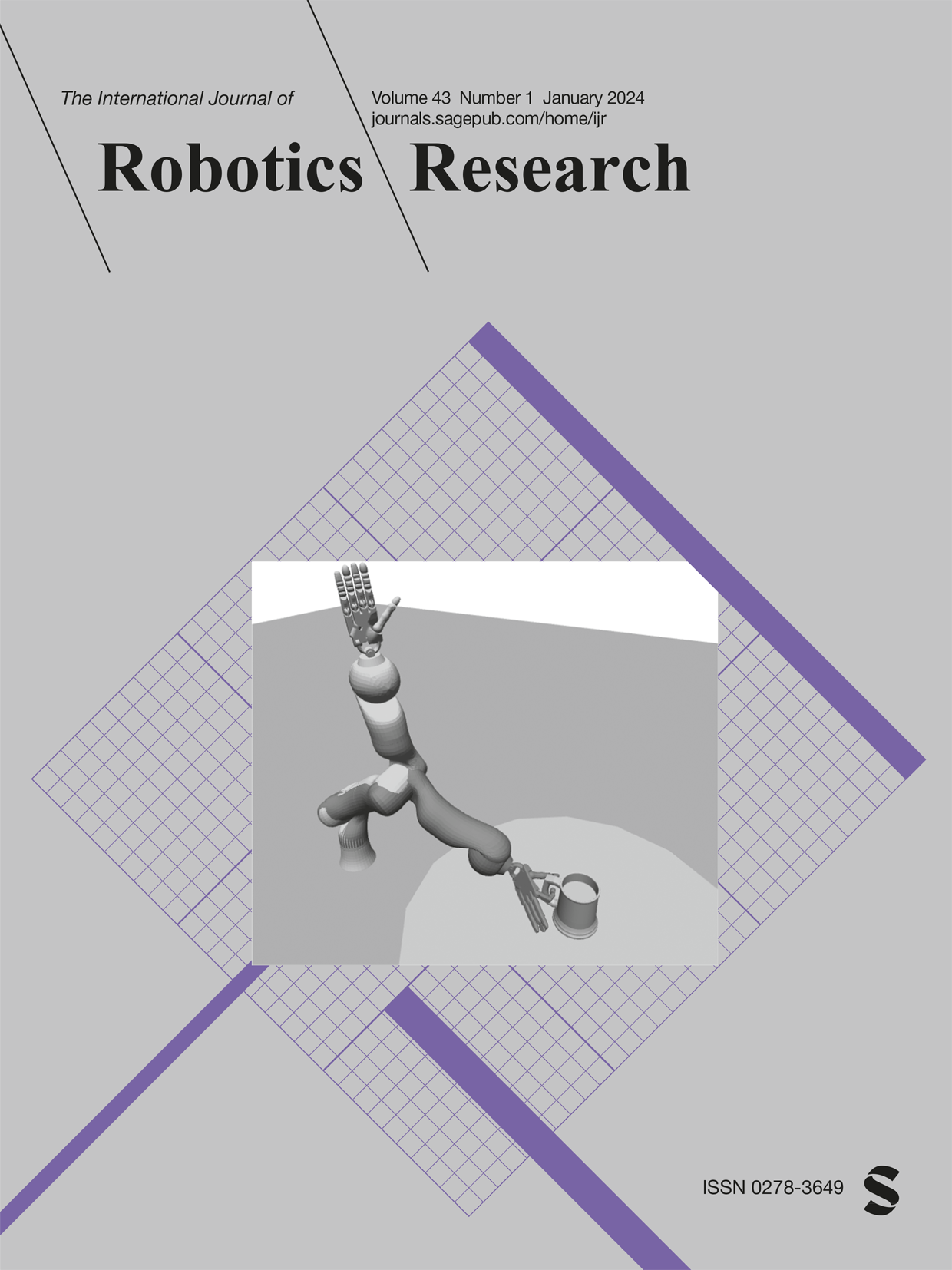On-manifold probabilistic Iterative Closest Point: Application to underwater karst exploration
IF 5
1区 计算机科学
Q1 ROBOTICS
引用次数: 0
Abstract
This paper proposes MpIC, an on-manifold derivation of the probabilistic Iterative Correspondence (pIC) algorithm, which is a stochastic version of the original Iterative Closest Point. It is developed in the context of autonomous underwater karst exploration based on acoustic sonars. First, a derivation of pIC based on the Lie group structure of S E ( 3 ) is developed. The closed-form expression of the covariance modeling the estimated rigid transformation is also provided. In a second part, its application to 3D scan matching between acoustic sonar measurements is proposed. It is a prolongation of previous work on elevation angle estimation from wide-beam acoustic sonar. While the pIC approach proposed is intended to be a key component in a Simultaneous Localization and Mapping framework, this paper focuses on assessing its viability on a unitary basis. As ground truth data in karst aquifer are difficult to obtain, quantitative experiments are carried out on a simulated karst environment and show improvement compared to previous state-of-the-art approach. The algorithm is also evaluated on a real underwater cave dataset demonstrating its practical applicability.流形概率迭代最近点在水下岩溶勘探中的应用
本文提出了概率迭代对应(pIC)算法的流形上导数MpIC,它是原始迭代最近点的随机版本。它是在基于声波声纳的自主水下岩溶探测的背景下开发的。首先,基于SE(3)的李群结构推导了pIC。还提供了对估计的刚性变换建模的协方差的闭合形式表达式。在第二部分中,提出了它在声学声纳测量之间的三维扫描匹配中的应用。这是对以前宽波束声学声纳仰角估计工作的扩展。虽然所提出的pIC方法旨在成为同步定位和映射框架中的关键组成部分,但本文侧重于在统一的基础上评估其可行性。由于岩溶含水层的地面实况数据很难获得,因此在模拟岩溶环境中进行了定量实验,与以前的最先进方法相比有所改进。该算法也在真实的水下洞穴数据集上进行了评估,证明了其实用性。
本文章由计算机程序翻译,如有差异,请以英文原文为准。
求助全文
约1分钟内获得全文
求助全文
来源期刊
CiteScore
22.20
自引率
0.00%
发文量
34
审稿时长
6-12 weeks
期刊介绍:
The International Journal of Robotics Research (IJRR) has been a leading peer-reviewed publication in the field for over two decades. It holds the distinction of being the first scholarly journal dedicated to robotics research.
IJRR presents cutting-edge and thought-provoking original research papers, articles, and reviews that delve into groundbreaking trends, technical advancements, and theoretical developments in robotics. Renowned scholars and practitioners contribute to its content, offering their expertise and insights. This journal covers a wide range of topics, going beyond narrow technical advancements to encompass various aspects of robotics.
The primary aim of IJRR is to publish work that has lasting value for the scientific and technological advancement of the field. Only original, robust, and practical research that can serve as a foundation for further progress is considered for publication. The focus is on producing content that will remain valuable and relevant over time.
In summary, IJRR stands as a prestigious publication that drives innovation and knowledge in robotics research.

 求助内容:
求助内容: 应助结果提醒方式:
应助结果提醒方式:


